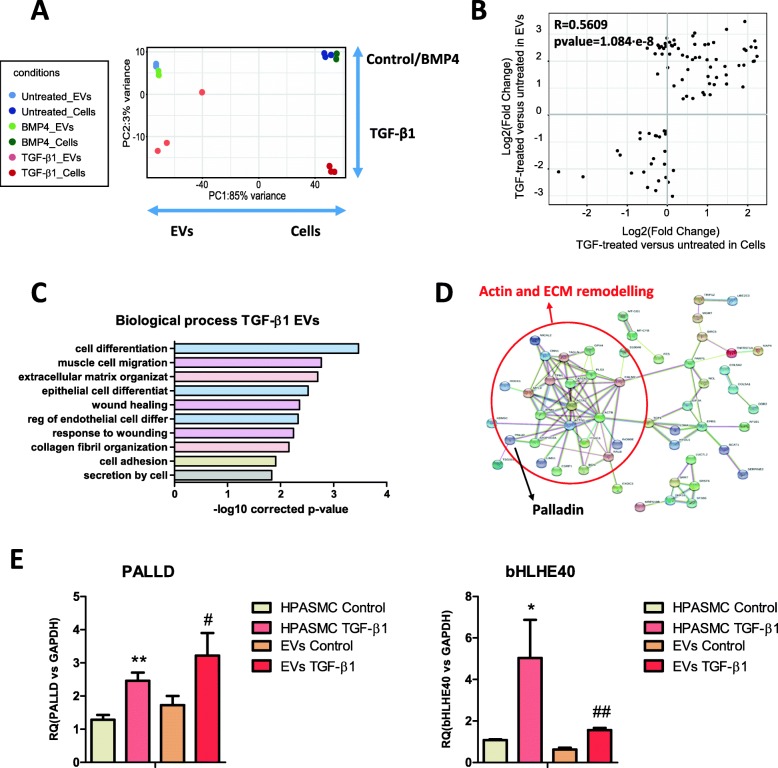Fig. 4.
EVs from TGF-β1 treated HPASMCs reflect changes in gene expression and carry greater amounts of palladin and bHLHE40. a, Data from the low-input RNA-Seq was analysed to find differentially expressed RNAs present in EVs from HAPSMCs treated with TGF-β1 and BMP4. PCA showed EVs from TGF-β1 treated cells being further separated from controls than those from BMP4-EVs, in a similar extent to their donor cells. b, Representation of fold change in TGF-β1 treated HAPSMCs and their EVs showing correlation of the alterations found on differential transcripts. c, GO analysis for biological processes performed with the differential transcripts found in EVs from TGF-β1 treated HAPSMCs. d, Protein interaction analysis of the RNAs differentially expressed in EVs from TGF-β1-treated HPASMCs compared to control EVs. A node involved in actin and ECM remodelling has been underlined. Position of palladin in this node is highlighted. e, Validation by qRT-PCR of the upregulation of palladin and bHLH40 in HPASMCs and their EVs after 48 h TGF-β1 stimulation (n = 3 biological replicates). Data are presented as mean ± SEM. *P ≤ 0.05, **P ≤ 0.01, ***P ≤ 0.001 (Student’s t-test). Treatment of HPASMC with TGF-β1 (10 ng/ml) was performed for 48 h and renewed every 24 h. Protein interaction analyses were performed with STRING and GO enrichment using DAVID software. PCA = principal component analysis, GO = Gene Ontology

